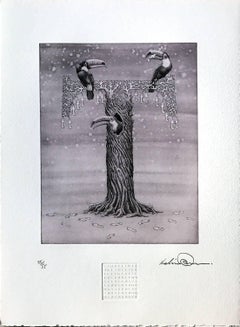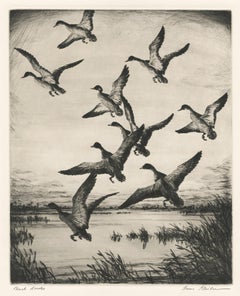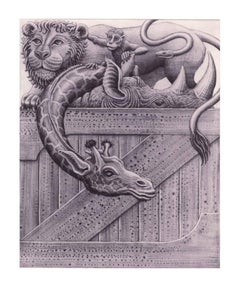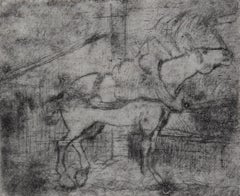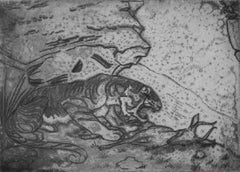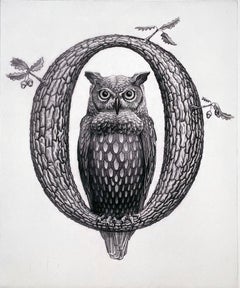Etching Animal Prints
2010s Contemporary Etching Animal Prints
Etching, Aquatint
1960s American Realist Etching Animal Prints
Etching
2010s Contemporary Etching Animal Prints
Etching, Aquatint
19th Century Impressionist Etching Animal Prints
Etching
1910s Etching Animal Prints
Etching
2010s Contemporary Etching Animal Prints
Etching, Aquatint
2010s Contemporary Etching Animal Prints
Etching, Aquatint
2010s Contemporary Etching Animal Prints
Aquatint, Etching
1950s Abstract Etching Animal Prints
Etching
1920s Etching Animal Prints
Etching
1890s Impressionist Etching Animal Prints
Etching, Aquatint
2010s Contemporary Etching Animal Prints
Etching, Aquatint
2010s Contemporary Etching Animal Prints
Etching, Aquatint
2010s Contemporary Etching Animal Prints
Etching, Aquatint
20th Century Modern Etching Animal Prints
Drypoint, Aquatint
1930s Etching Animal Prints
Etching
1980s Contemporary Etching Animal Prints
Etching
20th Century Modern Etching Animal Prints
Drypoint, Aquatint
20th Century Modern Etching Animal Prints
Drypoint, Aquatint
20th Century Modern Etching Animal Prints
Drypoint, Aquatint
20th Century Modern Etching Animal Prints
Drypoint, Aquatint
20th Century Modern Etching Animal Prints
Aquatint, Drypoint
20th Century Modern Etching Animal Prints
Aquatint, Drypoint
20th Century Modern Etching Animal Prints
Aquatint, Drypoint
20th Century Modern Etching Animal Prints
Drypoint, Aquatint
20th Century Modern Etching Animal Prints
Aquatint, Drypoint
20th Century Modern Etching Animal Prints
Drypoint, Aquatint
20th Century Modern Etching Animal Prints
Aquatint, Drypoint
20th Century Modern Etching Animal Prints
Drypoint, Aquatint
20th Century Modern Etching Animal Prints
Drypoint, Aquatint
20th Century Modern Etching Animal Prints
Aquatint, Drypoint
20th Century Modern Etching Animal Prints
Drypoint, Aquatint
20th Century Modern Etching Animal Prints
Aquatint, Drypoint
20th Century Modern Etching Animal Prints
Drypoint, Aquatint
20th Century Etching Animal Prints
Etching
1910s Post-Impressionist Etching Animal Prints
Paper, Etching
1930s Etching Animal Prints
Etching
Mid-19th Century American Impressionist Etching Animal Prints
Drypoint, Etching
2010s Contemporary Etching Animal Prints
Etching, Aquatint
2010s Contemporary Etching Animal Prints
Etching
2010s Contemporary Etching Animal Prints
Etching, Aquatint
2010s Contemporary Etching Animal Prints
Etching, Aquatint
2010s Contemporary Etching Animal Prints
Etching, Aquatint
Early 2000s Contemporary Etching Animal Prints
Etching, Aquatint
2010s Contemporary Etching Animal Prints
Etching, Aquatint
2010s Contemporary Etching Animal Prints
Etching, Aquatint
2010s Etching Animal Prints
Etching, Aquatint
2010s Contemporary Etching Animal Prints
Etching, Aquatint
Early 2000s Contemporary Etching Animal Prints
Etching, Aquatint
2010s Contemporary Etching Animal Prints
Etching, Aquatint
2010s Contemporary Etching Animal Prints
Etching, Aquatint
1950s American Modern Etching Animal Prints
Etching
1920s Etching Animal Prints
Etching
1940s American Realist Etching Animal Prints
Etching
21st Century and Contemporary Contemporary Etching Animal Prints
Etching, Aquatint
1920s Post-Impressionist Etching Animal Prints
Etching
2010s Contemporary Etching Animal Prints
Etching, Aquatint
1910s Etching Animal Prints
Aquatint, Etching
